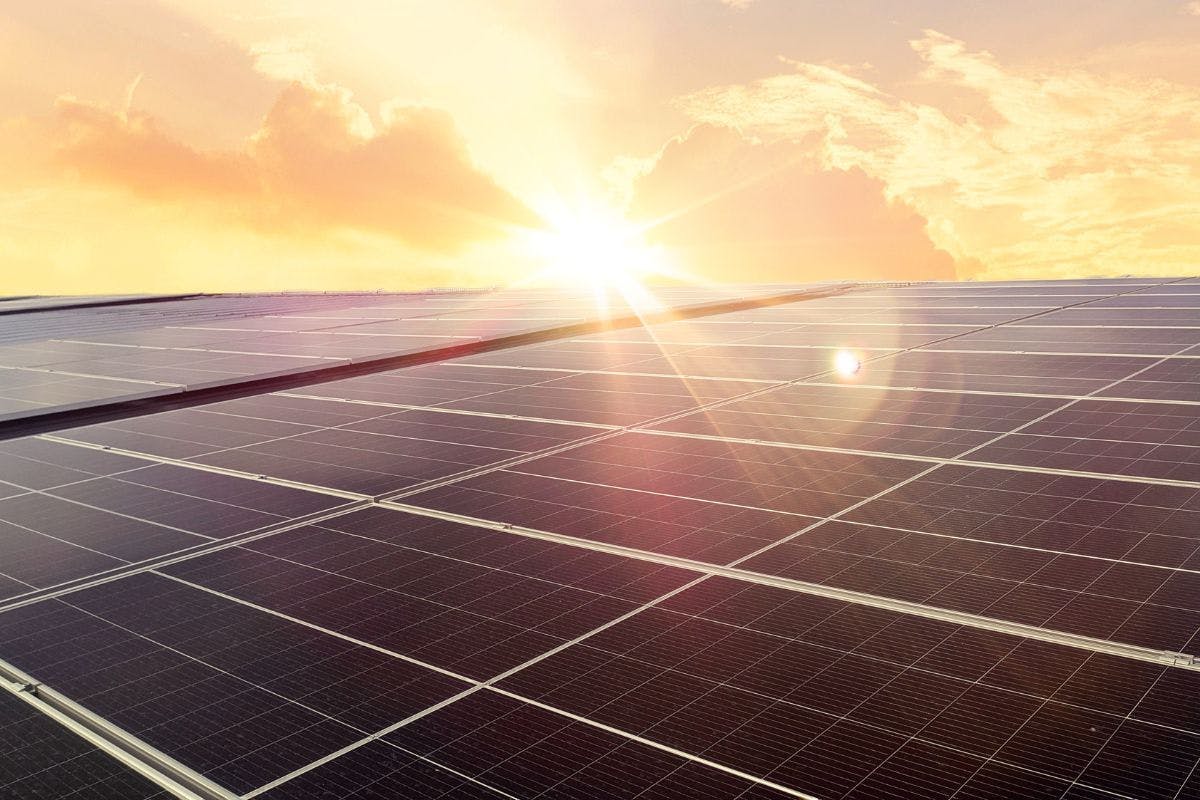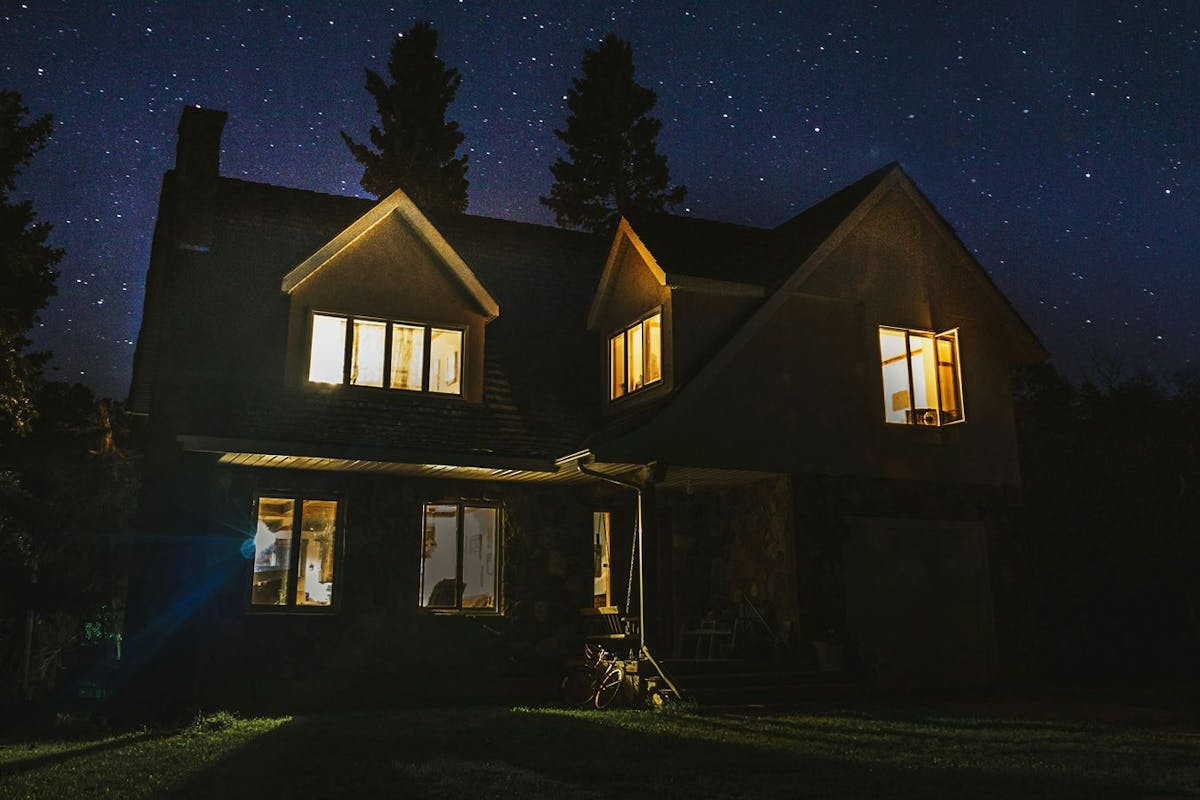The Best Angle for Solar Panel Installation
Last edited

Author
Andrew Giermak
Solar and Electrification Writer and Editor

Editor
Ryan Barnett
SVP, Policy & New Market Development

Solar panels need sunlight to generate electricity, so you should just point them at the sun, right?
Since the sun moves throughout the day and most solar panels are stationary, it's a little trickier than that
If you have to pick one direction for solar panels and stick with it, which is best? The good news is a reputable solar installer will help you design the right home solar panel system for you, but here's what you'd need to know to get started.
See how much you can save by going solar with Palmetto
Why Are Solar Panels Installed at an Angle?
Solar panels work best when they get as much sunlight as possible. The more they get, the more electricity they create. Ideally, you would just point the solar panel directly at the sun and follow the sun as it moves through the sky.
Unfortunately, solar tracking systems that can follow the sun are too expensive for most residential uses. It’s usually more cost-effective to buy a few more solar panels.
In general, solar panels should be installed so the sunlight hits them at as close to a perpendicular 90-degree angle for as long as possible during the day. To achieve that goal, most solar panels face the equator and are installed at an angle between 30 to 45 degrees relative to the horizon.
- For homes in the northern hemisphere, solar panels should face south.
- For homes in the southern hemisphere, solar panels should face north.
If solar panels are installed at a suboptimal angle, they won’t generate the most electricity possible, and you could be missing out on additional savings and energy.
The best solar panel angle for you might miss some sunlight in the morning or evening, or during the winter to be optimized for summer days when the sun is strong.
What is the Right Angle for Home Solar Panels?
As a rule of thumb, the optimal solar panel angle is the latitude where your home is located. For example, Miami, Florida, is at 25.7617° N so solar panels on homes there should be installed at about a 25° angle. In comparison, Portland, Oregon, is at 45.5152° N so panels there should be angled to about 45°.
Determining the optimal tilt angle is not something most people should do on their own, especially if you have no expertise in the area. Since the sun changes its position throughout the day, and rooftop solar panels are not designed to be moved once installed, that makes the process of determining the right solar panel tilt angle a little tricky. In most cases, the calculations should be left to professional solar panel designers and installers.
Tilt angle vs azimuth angle
When it comes to positioning solar panels, there are two angles to consider.
- Tilt angle: The solar panels’ vertical angle. The lower the angle, the more they face up to the sky. Also known as the elevation angle.
- Azimuth angle: The horizontal angle solar panels face in relation to the equator.
We mentioned solar panels in the northern hemisphere should face south, so you might think calculating the azimuth angle is easy — just point them south! However, true south, which is different from magnetic south, may differ as much as 20° from magnetic south.
See how much you can save by going solar with Palmetto
Factors That Determine the Best Angle for Solar Panels
Your location, your roof, and your weather directly influence the best angle for your rooftop solar panels.
Your location
Your home’s latitude and longitude is the most important element in determining the ideal angle for your solar panels. The equator is where the sun is directly overhead for a majority of the year, so the goal is to point your panels towards that location.
- The closer you are to the equator, the lower the angle can be. If you lived on the equator, you could point your solar panels directly up and be optimized for solar power generation.
- The further you are from the equator, the steeper the needed angle. If you lived on one of the poles, you’d need to point your solar panels almost at the horizon to maximize your solar energy production.
Your location also impacts the number of peak sun hours your home receives.
Your roof
To maximize your energy production, the roof of your house must meet some essential requirements. Experts from a professional solar power company can look at your roof and tell you if any of these three factors might affect the optimum angle for your solar panels:
Angle: Depending on your roof’s angle, your installer may add additional support structures to change the angle of your solar panels. These calculations can become more complex if your roof includes a variety of pitches, corners, and forms.
Shape: Gable, hip, and flat roofs are usually considered ideal for solar panels and optimal sunlight exposure. The more architectural elements on your roof, the more difficult it can be to determine the placement and angle of your solar panels.
Shading: Since solar panels create electricity by absorbing sunlight, anything blocking them from the sun could significantly reduce their electricity generation. It’s important to place your solar panels where the least amount of shade falls on them throughout the day and all seasons of the year.
Your seasonal weather
Your location on the Earth dictates the amount of sunlight you’re expected to get in a given season. Since the sun's height changes from place to place and season to season, solar seasonality can influence the optimal angle of your solar panels. For example, if your area gets a lot of early morning fog, you might angle the panels to optimize for late afternoon production.
The other factor to consider is that the ideal angle changes from summer to winter, so solar panels are typically installed at an angle that will balance the needs of both seasons. The reason panels in Miami get installed at about a 25° angle is that the ideal summer angle is closer to 10°, while the ideal winter angle is closer to 40° degrees, so the 25° angle is a compromise between the two.
Regardless of your location and situation, a professional solar company will installyour solar array at the optimum angle.

Credit: Michael Pointner; Pixabay
Best Direction for Solar Panels
In general, in the US and the northern hemisphere, solar panels are pointed south for optimal energy generation. Due to specifics such as your roof’s angle, direction, or shading, a professional might design your panels to face at an angle to the east or west.
East-facing panels will gather more sunlight in the morning hours. West-facing panels will gather more solar power in the afternoon.
More than half of residential solar panels are installed facing south, according to the Lawrence Berkeley National Laboratory. Another 23% face west and most of the rest are installed pointing east. A very small number are installed facing north.
Key Factors in Designing a Solar Panel System
There are other factors and details that determine the best configuration of a home solar system.
A professional installer should account for the roof material and its durability. Tile roofs may need special hardware or other specifications to make sure water flow or damage to the tiles aren’t problems. While modern solar panels work on a vast majority of roofs, old or weakened roofs may need replacing before your solar panels are installed.
You current and projected energy usage is another important factor. An undersized system might not cover as much of your energy bill as possible. An oversized system will be more expensive upfront, leading to a longer solar panel payback period.
If you are looking to install solar panels on your home, try out Palmetto's Free Solar Design and Savings Estimate Tool today.
See what solar can do for you:
Frequently Asked Questions
What is the best angle for solar panels?
The best angle for solar panels takes into account your latitude and longitude, your roof, your property’s shading, and seasonality. For most places in the US, the best angle is 30-45 degrees.
Should solar panels face north?
In the northern hemisphere, solar panels typically should not face north. Solar panels facing south will be the most productive, followed by east and west facing panels.
Is solar panel angle or direction more important?
Both are important. A solar panel installation professional will design your system taking solar panel angle and direction into account.
Is solar panel tracking worth it for homes?
In almost all cases, no, solar panels capable of tracking the sun throughout the day are too expensive and don’t generate enough additional energy to be worth it.


